
HOME
INTRO
SYMBOLS
ALMANAC
ECONOMY
GEOGRAPHY
STATE MAPS
PEOPLE
FORUM
NEWS
COOL SCHOOLS
STATE QUIZ
STATE LINKS
BOOK STORE
MARKETPLACE
NETSTATE.STORE
NETSTATE.MALL
GUESTBOOK
CONTACT US


Dbl click any word in
document for definition.
Texas State Insect
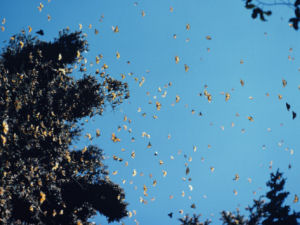
Texas State Insect: Monarch Butterflies On the Move
Photographs, prints, posters
The eastern populations of monarch butterflies pass through Texas twice a year during their migrations north and south. It is not one butterfly that completes the entire journey, but a series of generations born along the migration path. The complete journey exceeds the lifespan, 2-6 weeks, individual monarch butterflies.
In early spring of each year, butterflies that have been hibernating in Mexico awaken and head north, eventually spreading into Canada.
- On the way north, they leave a trail of eggs in Texas and other southern states, resulting in a second generation of young monarchs.
The second generation monarch butterflies continue north, birthing three more generations of butterflies.
In August, the fourth generation, the great, great granchildren, begin a long journey south to hibernate in Mexico.
- This fourth generation again flies through Texas, and other southern states, this time to rest and feed as it heads for its hibernation in Mexico.
H.C.R. No. 94
HOUSE CONCURRENT RESOLUTION
WHEREAS, The State of Texas has traditionally recognized a variety of official state symbols that embody the proud spirit and rich heritage of our state; and
WHEREAS, The bluebonnet, the Guadalupe bass, and the mockingbird are examples of natural specimens that serve to symbolize the great diversity of the Texas landscape, while the state dish, chili, fittingly represents another aspect of our shared culture as Texans; and
WHEREAS, In keeping with this custom, the designation of the monarch butterfly as the official State Insect of Texas will provide suitable recognition for this regal inhabitant of the Lone Star State; and
WHEREAS, The monarch butterfly, known to scientists as Danaus plexippus, is a familiar and thrilling sight to Texans who play host to this beautiful insect each year as it travels southward toward the equator; its distinctive rust-colored wings, marked by black veins and two rows of white spots, make the monarch butterfly instantly recognizable to all; and
WHEREAS, This stately creature is also renowned for its unique ability to evade predators; its main source of nourishment, the milkweed plant, contains a form of poison that makes the monarch butterfly unpalatable to birds and other hungry critters; and
WHEREAS, Like Texas, the monarch butterfly has inspired imitators but remains in a league all its own; the viceroy butterfly, whose wings closely resemble those of the monarch, manages to avoid being eaten by relying on the reputation of its more deadly cousin; and
WHEREAS, One of the heartiest and most resolute members of the insect kingdom, the monarch butterfly migrates nearly 2,000 miles southward each year in its quest to find a warmer home for the winter, descending on the State of Texas for one last rest and feeding before it embarks on the final leg of its journey to the mountains of Mexico; and
WHEREAS, The Lone Star State also holds the distinction of being the birthplace of this imperial insect; each spring the skies over Texas are filled with excitement and color as many thousands of these tiny creatures return to the site of their own nativity to give birth to a new generation; and
WHEREAS, Recognizing this butterfly's great affinity for our state, the National Monarch Project has designated the Abilene Zoological Gardens as the first official sanctuary along the eastern migration path, and Texans everywhere can take immense pride in the special tie that we share with this magnificent creature; and
WHEREAS, The monarch butterfly is as beautiful and memorable as a Texas sunset, soaring above all other insects in its nobility and determination, and its unique relationship with Texas makes it a truly appropriate symbol of the majestic spirit of the Lone Star State; now, therefore, be it
RESOLVED, That the 74th Legislature of the State of Texas hereby designate the monarch butterfly as the official State Insect of Texas.
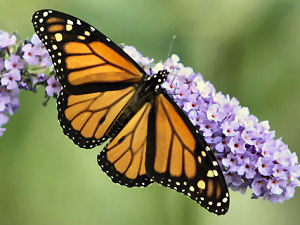
Texas State Insect: Monarch Butterfly
Photographs, prints, posters
The monarch butterfly became the official butterfly of the State of Texas when Governor George W. Bush signed House Concurrent Resolution No. 94 on June 16, 1995.
Texas Law
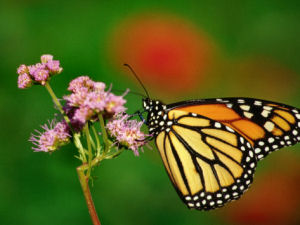
Texas State Insect: Monarch Butterfly
Photographs, prints, posters
The monarch butterfly was named the official insect of the State of Texas by House Concurrent Resolution and is not, therefore, listed in the Texas Statutes.
Only a few of Texas' myriad symbols were actually adopted by an act of the legislature and written into the Texas Statutes.
Sources...
The State of Texas. Legislative Reference Library. House Concurrent Resolution No. 94. Austin: The State of Texas, 1995. Web. .
The State of Texas. Texas Legislature Online. Texas Statutes. Austin: The State of Texas, 2012. Web. .
Shearer, Benjamin F. and Barbara S. State Names, Seals, Flags and Symbols: A Historical Guide Third Edition, Revised and Expanded. Westport, Conn: Greenwood Press, 3 Sub edition, 2001.
Additional Information
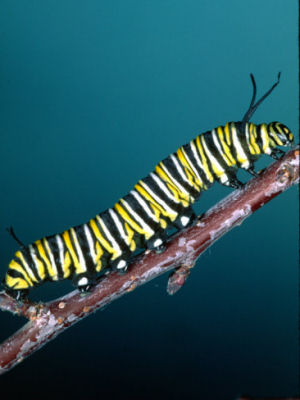
Texas State Insect: Monarch Butterfly Caterpillar
Photographs, prints, posters
Monarch Butterfly: Great Plains Nature Center, Wichita, Kansas.
Monarch Butterfly (Danaus plexippus): National Geographic Society: National Geographic Wildlife.
Monarch Watch: Monarch Watch is an educational outreach program based at the University of Kansas that engages citizen scientists in large-scale research projects. This program produces real data that relate to a serious conservation issue.
Monarch Watch gets children of all ages involved in science. The website provides a wealth of information on the biology and conservation of Monarch butterflies and many children use it as a resource for science fair projects or reports. Additionally, we encourage children to showcase their research or school projects on our website and we involve them in real science with the tagging program.
Monarch Butterfly: Journey North: Citizen scientists track the monarch butterfly migration each fall and spring as the monarchs travel to and from Mexico. Report your own observations of migrating butterflies to real-time migration maps.
Danaus plexippus - (Linnaeus, 1758), Monarch: A network connecting science with conservation - NatureServe Explorer: An Online Encyclopedia of Life.
Danaus plexippus (Linnaeus, 1758): Integrated Taxonomic Information System (ITIS) Here you will find authoritative taxonomic information on plants, animals, fungi, and microbes of North America and the world.
Danaus plexippus: Photographs from CalPhotos, a project of the Biodiversity Sciences Technology group (BSCIT), part of the Berkeley Natural History Museums at UC, Berkley.
State butterflies: Complete list of official state butterflies from NETSTATE.COM
State insects: Complete list of official state insects from NETSTATE.COM
More symbols & emblems: Complete list of official Texas state symbols from NETSTATE.COM.
Abilene Zoological Gardens: Official website.
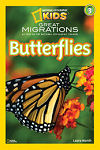
Great Migrations
Butterflies
Laura Marsh
National Geographic Readers: Great Migrations Butterflies, by Laura Marsh. 48 pages. Publisher: National Geographic Children's Books (October 12, 2010) Reading level: Ages 7+. The monarch butterfly, one of the most seemingly delicate of all of nature’s animals, proves to be one of the toughest in this reader. Making the yearly trip from the Northern United States and Canada to the Oyamel forest of Mexico is no easy task, and it takes five generations of butterflies in order to do so. Battling cold temperatures and the threat of starvation, these beautiful insects complete an almost 3,000 mile journey over the course of two months, only to have to turn and around and head back home.
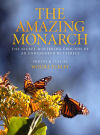
The Amazing Monarch
Windle Turley
The Amazing Monarch: The Secret Wintering Grounds of an Endangered Butterfly, by Windle Turley. 112 pages. Publisher: BenBella Books (October 5, 2010) In The Amazing Monarch, author and photographer Windle Turley chronicles the life cycle of the monarch butterfly. Replete with page after page of full-color photographs, the book shows the monarch’s rarely captured destination wintering grounds.
With carefully researched text and consultation with leading entomologists, The Amazing Monarch tracks the monarch’s migration and interesting life spans. Amazingly, this migration only takes place every three to five generations, but somehow, by the last week of October, they arrive at the same small groups of oyamel fir trees their ancestors populated the year before.
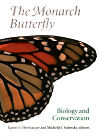
The Monarch Butterfly
The Monarch Butterfly: Biology and Conservation, Edited by Karen S. Oberhauser, Michelle J. Solensky. 256 pages. Publisher: Comstock Publishing Associates; 1 edition (May 27, 2004) Monarch butterflies are arguably the most recognized, studied, and loved of all insects, and the attention that scientists and the general public have paid to this species has increased both our understanding of the natural world and our concern about preserving it. The unique combination of basic research, background information, and conservation applications makes this book a valuable resource for ecologists, entomologists, naturalists, and teachers.
The knowledge of citizen scientists, biologists, and naturalists informs this book's coverage of every aspect of the monarch butterfly's life cycle (breeding, migration, and overwintering) from the perspective of every established monarch population (western North American, eastern North American, and Australian).
Where Butterflies Grow , by Joanne Ryder, 32 pages. Puffin (June 1, 1996) Reading level: Ages 4-8. In a field of lacy leaves, a small caterpillar hatches, grows, and sheds its skin, becoming a smooth, green creeper. It eats and changes some more, then in a sequence of remarkable close-ups, spins a sliken sling in which to pupate--until it finally bursts forth as a brilliant black swallowtail butterfly. Includes suggestions on how children can grow butterfiles in their own gardens.
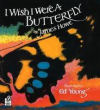
I Wish I Were
a Butterfly
James Howe
I Wish I Were a Butterfly, by James Howe. 40 pages. Voyager Books (February 28, 1994) Reading level: Ages 4-8. After the frog at the pond's edge tells him that he's ugly, the cricket of Swampswallow Pond loses his zest for life and for singing. The glowworm and the ladybug try to persuade the cricket that he's just as good as the rest of them, while the dragonfly declares, "Wishing is a waste of time." Finally, the Old One, a spider who lives on the other side of the pond, spins a wise tale about the real beauty of friendship and convinces the cricket to sing again. A simple fable that deserves to stay in print a long, long, time.
Peterson First Guide to Butterflies and Moths, by Paul A. Opler, edited by Roger Tory Peterson. 128 pages, Houghton Mifflin Harcourt; 2nd edition (February 20, 1998) Peterson First Guides are the first books the beginning naturalist needs. Condensed versions of the famous Peterson Field Guides, the First Guides focus on the animals, plants, and other natural things you are most likely to see. They make it fun to get into the field and easy to progress to the full-fledged Peterson Guides. DESCRIPTION

The Butterfly Book
Kersten Hamilton
The Butterfly Book: A Kid's Guide to Attracting, Raising, and Keeping Butterflies, by Kersten Hamilton. 40 pages. Avalon Travel Publishing; 1st edition (March 26, 1997. Reading level: Ages 9-12. An introduction to the life cycle, food, habitat, and behavior of butterflies shares advice on butterfly observation and conservation, explaining how to design a garden to attract butterflies and offering a color identification guide to twenty common North American butterflies.
National Audubon Society Field Guide to North American Butterflies, 928 pages. Knopf; Chanticleer Press ed edition (July 12, 1981) A handy field guide with more than 1,000 photographs of all the butterflies of North America north of Mexico, including all true butterflies, the most common skippers, and many migrants and strays. The color plates are visually arranged by shape and color, and thumb-tab silhouettes provide a convenient index to identification of butterflies in the field. The species account for each butterfly provides measurements, descriptions of each stage of the life cycle, and information on coloring or distinguishing markings, flight period, habitat, and range.
The Life Cycles of Butterflies: From Egg to Maturity, by Judy Burris and Wayne Richards. 160 pages. Storey Publishing, LLC (April 1, 2006) This book describes in text and photos the butterflies that commonly visit gardens in the eastern states. Beginning with a chapter that looks at the basics of butterfly egg laying, the growth of caterpillars, metamorphosis, and butterfly behavior, the authors move to the heart of the book. With exquisite close-up photography, the eggs, caterpillars, chrysalids, and adults of 23 well-known butterflies are revealed.
Attracting Butterflies & Hummingbirds to Your Backyard, by Sally Roth. 304 pages. Rodale Books (October 24, 2002) If you have never read one of Ms. Roth's books you are in for a real treat. Her writing style is wittily informative which makes us enjoy our lessons. She not only teaches us which plants to use in our gardens to attract both these winged wonders, but how to create the kinds of gardens they prefer. Shelter, water, host plants for butterfly caterpillars, and even fruit feeders and hibernating boxes are among the topics within these pages.
Stokes Butterfly Book: The Complete Guide to Butterfly Gardening, Identification, and Behavior, by Donald & Lillian Stokes, Ernest Williams. 96 pages, Little, Brown and Company; 1st edition (October 17, 1991) This popular guide to attracting, identifying, and enjoying all the common North American species of butterflies includes 149 full-color photos, 65 range maps, and two sample garden plans.
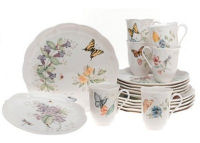
Lenox Butterfly Meadow
Lenox Butterfly Meadow Tableware Collection, Summer teas and spring brunches call for dinnerware as fresh and lovely as the weather. The Lenox Butterfly Meadow pattern features a garden motif of butterflies, bumblebees, ladybugs, and blossoms set against an ivory background. The delicately rendered images, created by Lenox artist Louise Le Luyer, vary between pieces for a charmingly playful table. Crafted from fine bone porcelain, the pattern has gently scalloped rims and is safe in the oven, microwave, and dishwasher. Like all Lenox dinnerware, the Butterfly Meadow line is covered by a lifetime replacement policy.

